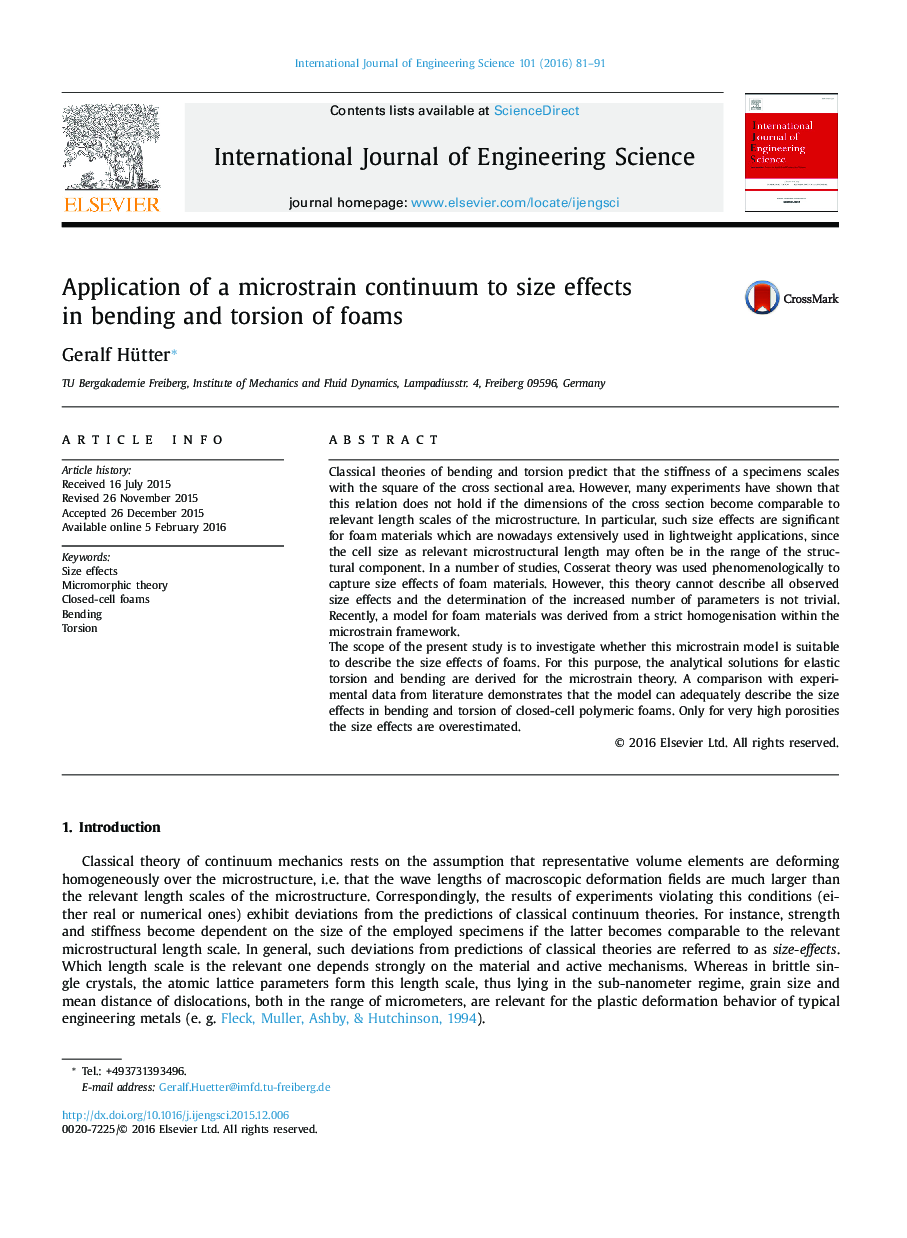| Article ID | Journal | Published Year | Pages | File Type |
|---|---|---|---|---|
| 824733 | International Journal of Engineering Science | 2016 | 11 Pages |
Classical theories of bending and torsion predict that the stiffness of a specimens scales with the square of the cross sectional area. However, many experiments have shown that this relation does not hold if the dimensions of the cross section become comparable to relevant length scales of the microstructure. In particular, such size effects are significant for foam materials which are nowadays extensively used in lightweight applications, since the cell size as relevant microstructural length may often be in the range of the structural component. In a number of studies, Cosserat theory was used phenomenologically to capture size effects of foam materials. However, this theory cannot describe all observed size effects and the determination of the increased number of parameters is not trivial. Recently, a model for foam materials was derived from a strict homogenisation within the microstrain framework.The scope of the present study is to investigate whether this microstrain model is suitable to describe the size effects of foams. For this purpose, the analytical solutions for elastic torsion and bending are derived for the microstrain theory. A comparison with experimental data from literature demonstrates that the model can adequately describe the size effects in bending and torsion of closed-cell polymeric foams. Only for very high porosities the size effects are overestimated.
